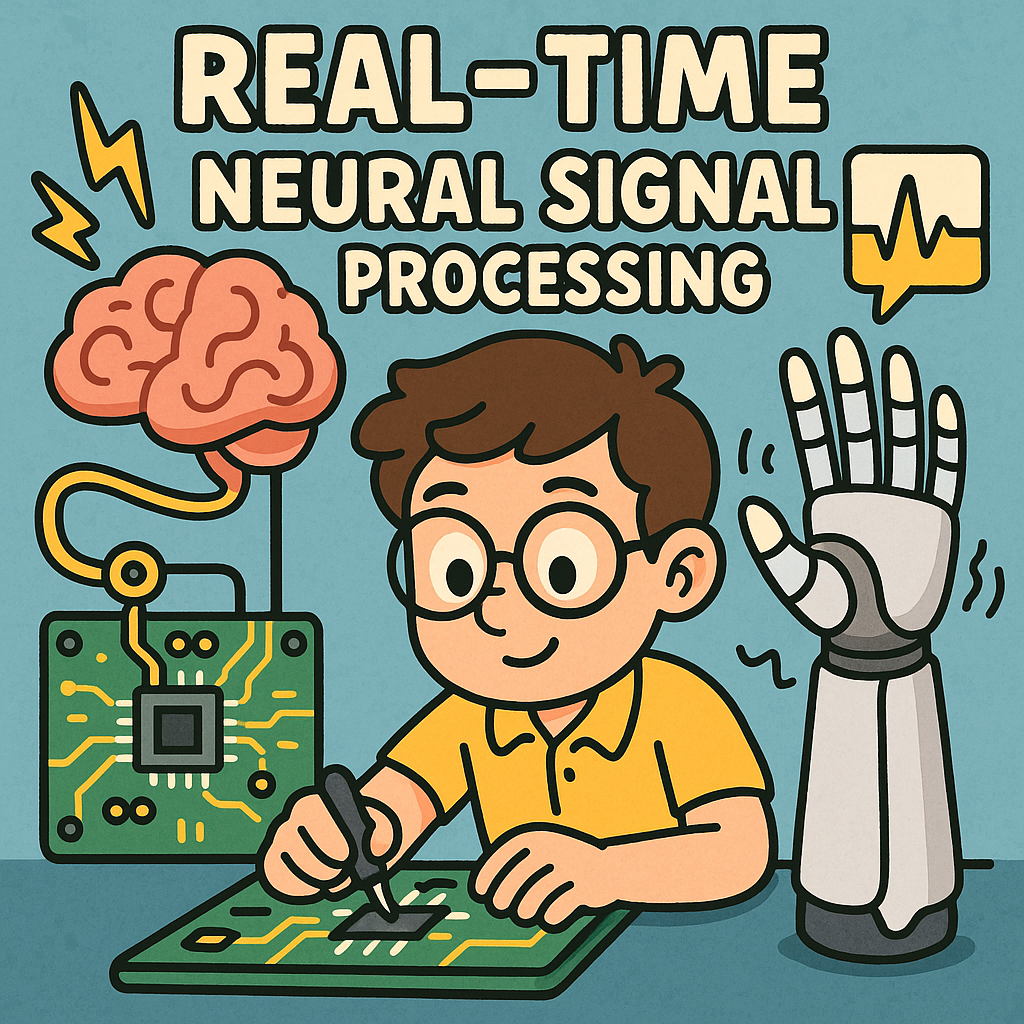Understanding the Need for Low-Latency in Myoelectric Prosthetic Hands
In the realm of prosthetics, especially with myoelectric hands, the demand for real-time neural signal processing is paramount. Users expect their prosthetic limbs to respond almost instantaneously to their intentions, creating a seamless interaction between human and machine. However, achieving this low-latency response is fraught with challenges that require a careful balance of hardware, firmware, and algorithmic design.
Challenges in Real-Time Neural Signal Processing
The primary challenge lies in the processing of electromyography (EMG) signals, which are often noisy and require precise filtering to extract meaningful data. The latency introduced during signal acquisition, processing, and actuation can lead to a disjointed user experience. Any delay can hinder the user’s ability to perform tasks smoothly, as they might not receive immediate feedback from their prosthetic device.
Hardware Design Considerations
Designing an embedded system for myoelectric prosthetic hands involves selecting the right hardware that can handle high-speed data acquisition while maintaining low power consumption. Microcontrollers such as the ARM Cortex-M series are increasingly popular due to their balance of performance and energy efficiency. However, the choice of sensors is equally crucial. Surface EMG sensors must be placed strategically to capture the most relevant signals without interference.
- Signal Conditioning: Amplifying and filtering EMG signals can introduce delays, and thus, using integrated analog front-end (AFE) chips can minimize this latency. These chips often come with built-in filters and programmable gain, which allows for rapid adjustments according to user needs.
- Processing Unit: For real-time processing, a dedicated digital signal processor (DSP) can be a game-changer. This allows for complex algorithms to run concurrently with minimal delay, ensuring that the prosthetic responds quickly to muscle signals.
Firmware Strategies for Low Latency
Once the hardware is in place, the firmware must be optimized for speed. This involves writing efficient code that minimizes the number of cycles needed to process incoming signals and execute commands. Using real-time operating systems (RTOS) can be advantageous as they are designed for applications that require timely responses.
- Interrupt-Driven Processing: Utilizing interrupts for signal processing can drastically reduce latency. Instead of continuously polling data, the system waits for an event (like a new EMG signal) to occur, thus freeing up processing power for other tasks.
- Adaptive Algorithms: Implementing adaptive filtering techniques (like the Least Mean Squares algorithm) allows the system to adjust its parameters in real-time, enhancing the signal quality without introducing additional latency.
Algorithmic Trade-offs
The algorithms used for interpreting EMG signals directly impact the responsiveness of the prosthetic hand. Most commonly, machine learning algorithms are employed to classify muscle signals into specific gestures. However, these models can be computationally intensive, leading to potential delays.
- Model Complexity: Simpler models may provide quicker results but can be less accurate. Conversely, more complex deep learning models yield higher accuracy but require more processing time. A hybrid approach that utilizes feature extraction followed by a lightweight classifier can offer a reasonable compromise.
- Batch Processing vs. Real-Time Analysis: While batch processing can help improve accuracy by using a larger dataset, it introduces latency. Real-time analysis emphasizes speed but may sacrifice some accuracy. Choosing the right approach depends on the specific application and user requirements.
Real-World Design Trade-offs
In practice, every design decision is a trade-off between performance, power consumption, and user experience. For instance, implementing wireless communication for control signals can enhance user mobility but introduces additional latency compared to wired systems. Similarly, while using high-fidelity sensors might improve signal quality, they often come at a higher cost and power consumption.
Ultimately, the goal of designing low-latency embedded systems for myoelectric prosthetic hands is not just to create a device that works but to engineer a solution that feels intuitive and responsive. Each decision—whether it’s about hardware selection, firmware optimization, or algorithm choice—must be made with the end user in mind, ensuring that the technology effectively bridges the gap between human intention and mechanical action.



